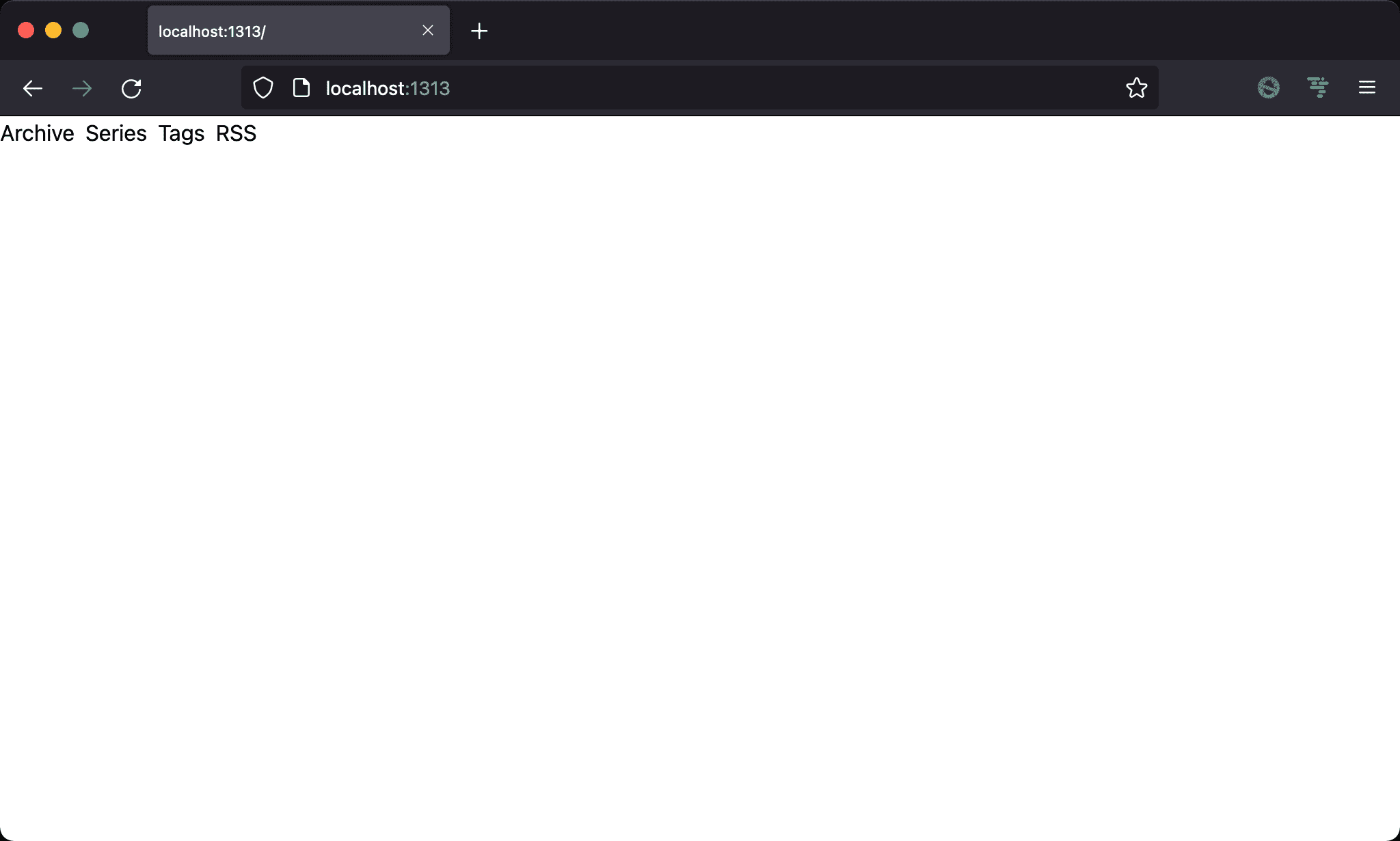For site-level custom data, we can store them on the params section of config.json.
Version
Hugo 0.92
Page

Menu items are custom data, not written directly in HTML.
Site Variable
config.json
{
"baseURL": "http://example.org/",
"languageCode": "en-us",
"title": "My New Hugo Site",
"params": {
"menu": [
{
"title": "Archive",
"url": "#"
},
{
"title": "Series",
"url": "#"
},
{
"title": "Tags",
"url": "#"
},
{
"title": "RSS",
"url": "#"
}
]
}
}
Line 5
"params": {
"menu": [
{
"title": "Archive",
"url": "#"
},
{
"title": "Series",
"url": "#"
},
{
"title": "Tags",
"url": "#"
},
{
"title": "RSS",
"url": "#"
}
]
}
We can store custom data on the params section.
Layout
layouts/index.html
<!DOCTYPE html>
<html lang="en">
<head>
<meta charset="UTF-8" />
<meta name="viewport" content="width=device-width, initial-scale=1.0" />
<script src="alpine.js" defer></script>
<link rel="stylesheet" href="output.css" />
</head>
<body>
<ul class="flex gap-x-2">
{{ range .Site.Params.Menu }}
<li>
<a href="{{ .url }}">{{ .title }}</a>
</li>
{{ end }}
</ul>
</body>
</html>
Line 11
{{ range .Site.Params.Menu }}
<li>
<a href="{{ .url }}">{{ .title }}</a>
</li>
{{ end }}
range: iterate over a array
Conclusion
- We can also store custom data by JSON file in the
datafolder